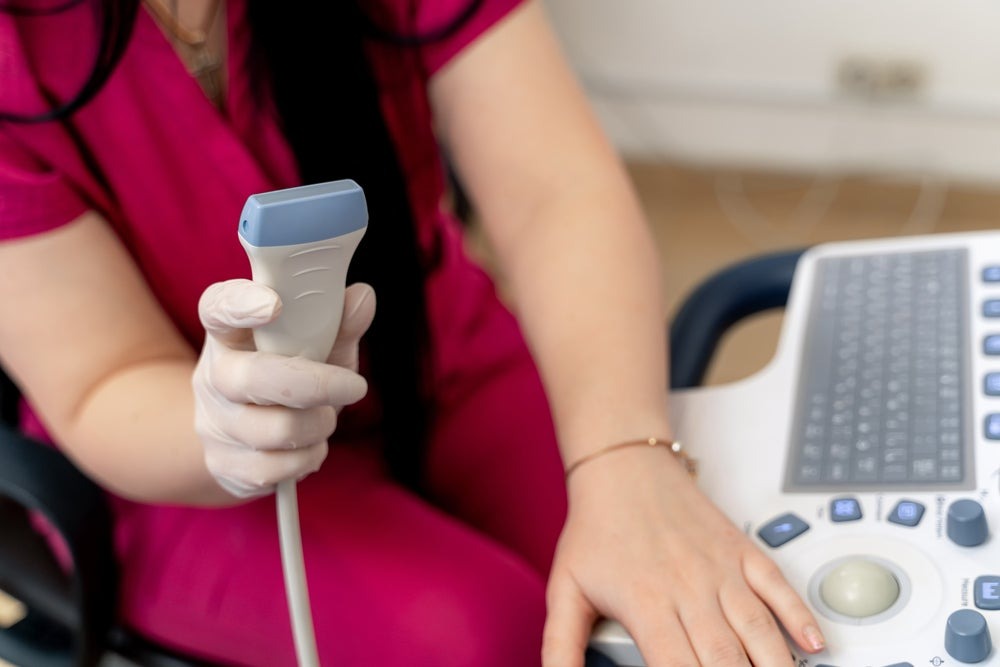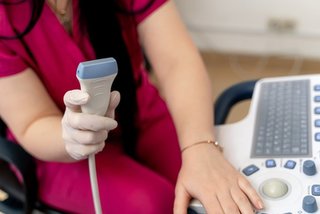Comment
Diagnostic imaging device innovation landscape for 2024
GlobalData's database analysis has revealed that ultrasound devices account for 12% of diagnostic imaging devices in development.

Credit: Terelyuk via Shutterstock
A
dvancements in software, hardware, and consumables in diagnostic imaging are being driven by the demand for early disease diagnosis and personalised medicine.
According to insights from GlobalData, a leading data and analytics company, developments in AI, imaging agents, and ultrasound technology are set to usher in a new era of faster, more accurate, and widely accessible diagnostic capabilities.
AI holds promise for improving efficiency and precision in image analysis. It is rapidly evolving in various medical sectors, and diagnostic imaging can make use of the technology for both image collection and analysis.
AI-integrated systems and computer vision can be used to identify abnormalities in patients’ scan images and streamline radiologists’ workload by suggesting items for review and potential treatment pathways based on a patient’s medical history.
With further development, AI could also benefit molecular imaging research, which is crucial in understanding various diseases by offering the ability to identify and assess biological processes at the cellular level.
Many imaging agents are intended for applications in oncology, where early diagnosis is critical for patient outcomes.
Specificity between normal cells and cancer cells is valuable, but difficult to obtain, information.
GlobalData’s Pipeline Products Database reveals that in 2024, imaging agents account for nearly 60% of all diagnostic imaging devices in development, with 50% of pipeline imaging agents intended for use in oncology.
Additionally, the number of nuclear imaging agent approvals expected in 2024 is twice the number of approvals from 2023, further illustrating their significance and developing commercial presence.
Finally, ultrasound devices have been gaining popularity due to their user-friendly, safe, and cost-effective design.
GlobalData’s database analysis reveals that ultrasound devices currently account for 12% of diagnostic imaging devices in development and for the highest number of expected device approvals in 2024 of any diagnostic imaging device market.
In particular, handheld ultrasound devices are emerging as valuable tools for preventive screening, diagnostic tests, and monitoring changes in response to treatment.
These devices are expected to leverage recent advancements in AI and imaging agents to further increase efficiency and accuracy, and to expand their imaging capabilities.
These advancements are expected to unfold in 2024 and contribute to diagnostic imaging’s increasingly pivotal role in preventive healthcare and early disease detection.
As the global population ages and diseases such as cancer become more prevalent, enhancing the efficiency, accuracy, and accessibility of diagnoses will be crucial.
The metaverse remains too risky for healthcare
Although metaverse technologies show promise to reinvent healthcare approaches and bring new experiences to healthcare providers and patients in the coming years, adoption is still at an early stage.
For example, the metaverse could improve access to care for all patients, regardless of their location. The use of telemedicine surged in popularity during Covid-19, when practitioners found they could efficiently and quickly diagnose many conditions without needing to physically examine patients. While not at the same level at the start of the pandemic, demand for digital solutions to access healthcare services has remained high since.
Telemedicine consultations through VR would allow patients to access the best specialists anywhere, not limited by physical location. Holoportation could potentially allow doctors and patients to share the same virtual space and even allow doctors to examine a patient through a 3D projection.
Patients living in remote regions could be seen by healthcare professionals without having to travel great distances, and access to care for disabled or elderly people could improve significantly.
Virtual pharmacies could allow patients to pick up prescriptions directly from the metaverse, and have their drugs delivered to their real homes. For example, US pharmacy chain CVS has filed to trademark its pharmacy, virtual goods, and health services in the metaverse.
The mine’s concentrator can produce around 240,000 tonnes of ore, including around 26,500 tonnes of rare earth oxides.
Gavin John Lockyer, CEO of Arafura Resources
Total annual production


Caption. Credit:
The mine’s concentrator can produce around 240,000 tonnes of ore, including around 26,500 tonnes of rare earth oxides. As mining processes improve and the facility begins to push towards this output maximum, this could prove to be a source of rare earths on a much larger scale than many of the high-potential, yet unproven, exploration-stage projects in the country.
While China’s rare earth production remains orders of magnitude greater than Australia’s, large-scale and well-established projects such as the Mountt Weld facility could be Australia’s best chance to threaten Chinese rare earth production on a large scale.
$345m: Lynas Rare Earth's planned investment into Mount Weld.

Phillip Day. Credit: Scotgold Resources

Caption. Credit: